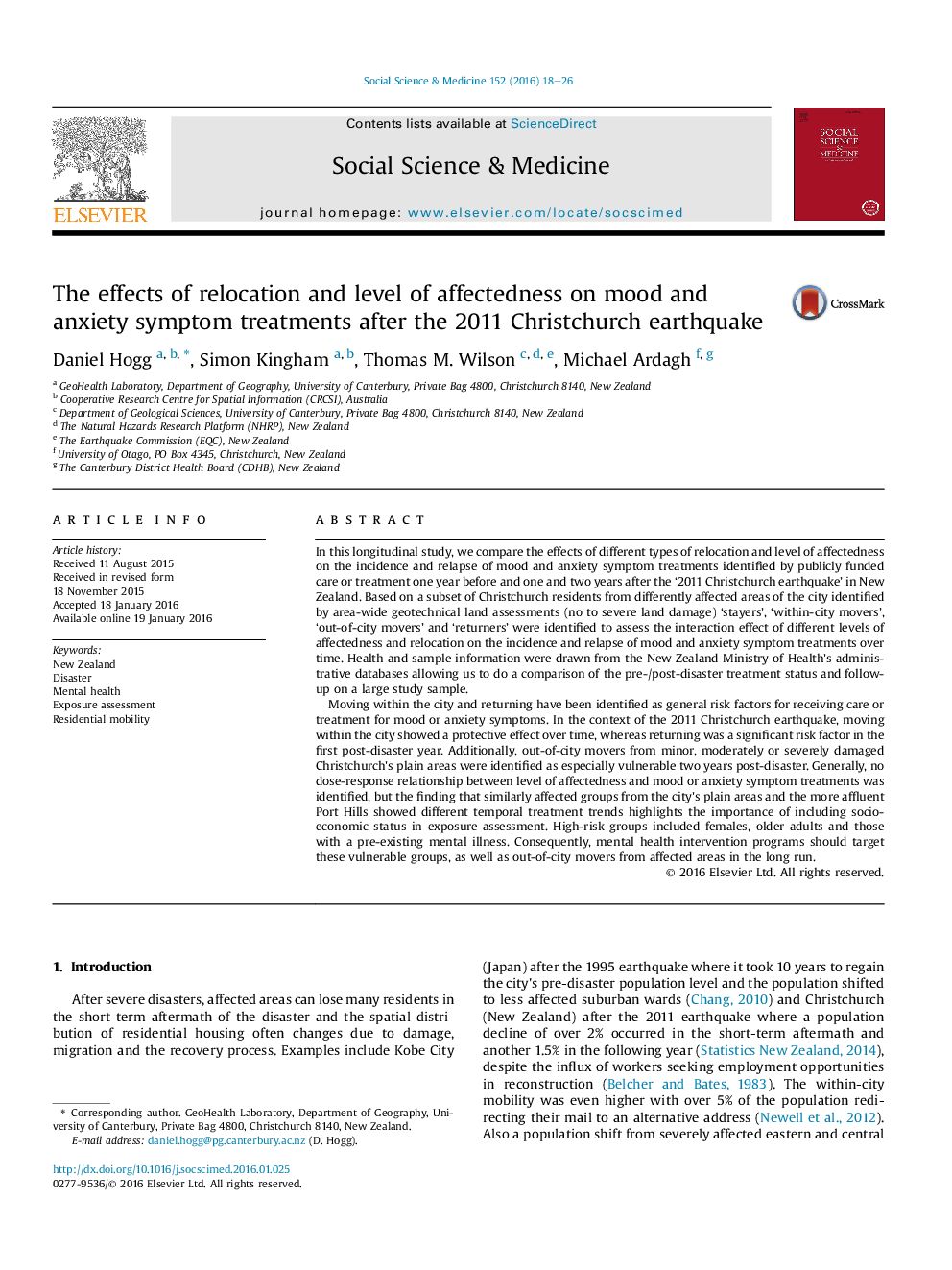| Article ID | Journal | Published Year | Pages | File Type |
|---|---|---|---|---|
| 7330503 | Social Science & Medicine | 2016 | 9 Pages |
Abstract
Moving within the city and returning have been identified as general risk factors for receiving care or treatment for mood or anxiety symptoms. In the context of the 2011 Christchurch earthquake, moving within the city showed a protective effect over time, whereas returning was a significant risk factor in the first post-disaster year. Additionally, out-of-city movers from minor, moderately or severely damaged Christchurch's plain areas were identified as especially vulnerable two years post-disaster. Generally, no dose-response relationship between level of affectedness and mood or anxiety symptom treatments was identified, but the finding that similarly affected groups from the city's plain areas and the more affluent Port Hills showed different temporal treatment trends highlights the importance of including socio-economic status in exposure assessment. High-risk groups included females, older adults and those with a pre-existing mental illness. Consequently, mental health intervention programs should target these vulnerable groups, as well as out-of-city movers from affected areas in the long run.
Related Topics
Health Sciences
Medicine and Dentistry
Public Health and Health Policy
Authors
Daniel Hogg, Simon Kingham, Thomas M. Wilson, Michael Ardagh,
